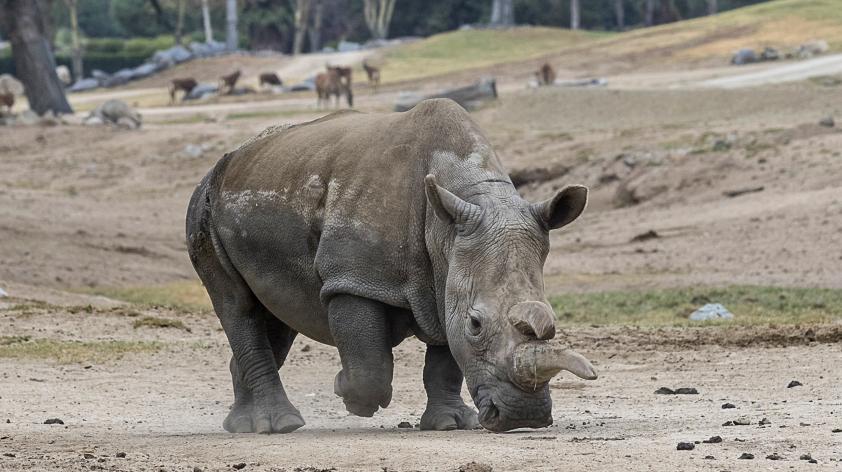
A Lifeline To Escape Extinction (Part 1)
Alone, the last three of your species… Not because your species was out-competed, not because your species could not adapt to change, but the end of your species because of humans. This is what mankind will have to tell Fatu, one of the last three remaining northern white rhinos (NWR) in existence, unless we can utilize all of the science that humans have learned (and still have to learn) and use it as a lifeline to rescue them.
Saving the northern white rhino Ceratotherium simum cottoni is seemingly impossible. All rhinos thrived for thousands of years, until humans began incorrectly believing that rhino horn could cure disease. Their numbers were decimated as humans hunted them for their horns (which are made of keratin, the same material and medicinal quality as your fingernails). With just three living NWR left in the universe, due to human ignorance and greed, humanity must try to rescue this species.
One thread of the lifeline is using stem cell research to produce genetically variable sperm and eggs for in vitro fertilization (IVF). The San Diego Zoo Institute for Conservation Research (ICR) has partnered with Dr. Jeanne Loring at The Scripps Research Institute, one of the world’s top human stem cell laboratories, to adapt human stem cell research to rhinos. As a Research Associate for ICR, my hope is to see this collaboration through until a "new" northern white rhino is born.
This collaboration is a part of a northern white rhino initiative that was presented earlier this year in a publication in Zoo Biology (Saragusty et al 2016). The northern white rhino initiative is mounting a massive effort to create a lifeline for the species through simultaneous efforts. Re-population of the NWR from extinction to a self-sustaining wild population is no trivial task. Every thread of hope that this project creates is an integral strand of the lifeline that will not only bring the world closer to ending extinction for the NWR but also for other endangered species.
All three remaining northern white rhinos are related. To successfully repopulate the species, sperm and eggs that are not related must be available for IVF. A wild population needs to have genetic diversity to thrive and survive, and that is where the San Diego Zoo’s Frozen Zoo® holds the key.
The Frozen Zoo® contains high genetic diversity in its cryogenically preserved cells. These living cells are fibroblasts, a type of skin cell, but how can we use these frozen skin cells to re-populate the NWR? That's where our stem cell collaboration comes in. Stem cells are pluripotent. They have the unique ability to become any cell type, hence the name, “pluri” meaning “many” and “potent” meaning “power”.
In 2006, Shinya Yamanaka discovered that fibroblasts can be “rewound” into a stem cell state, known as induced pluripotent stem cells (iPSCs). By applying this “rewinding” process to the fibroblasts in the Frozen Zoo®, we can create stem cells from many species, including the northern white rhino. These iPSCs can then be coerced into making any cell type, including sperm and eggs. Another benefit is that stem cells are “immortal”. That is, they will continue to grow and divide as long as the conditions are right, unlike other cell types that are a finite resource, senescing (or losing the power to grow and divide) over time.
Don’t confuse the science of stem cells with the science of cloning. The potential of stem cells to help repopulate the NWR is a far superior option than cloning. Cloning is synonymous to copying a photo, an exact duplicate, which means the gene pool remains stagnant. And just as a copy of a copy gets fuzzy, problems can develop in clones. Generating sperm and eggs from stem cells provides us an opportunity to “go back in time” and collect samples from the individuals in the Frozen Zoo® that never reproduced. These sperm and eggs, when used for IVF, would result in new genetic individuals. By applying the advances in human stem cell research to rhinos, we strive to contribute this thread of hope to the lifeline that will help the northern white rhino species escape extinction.













